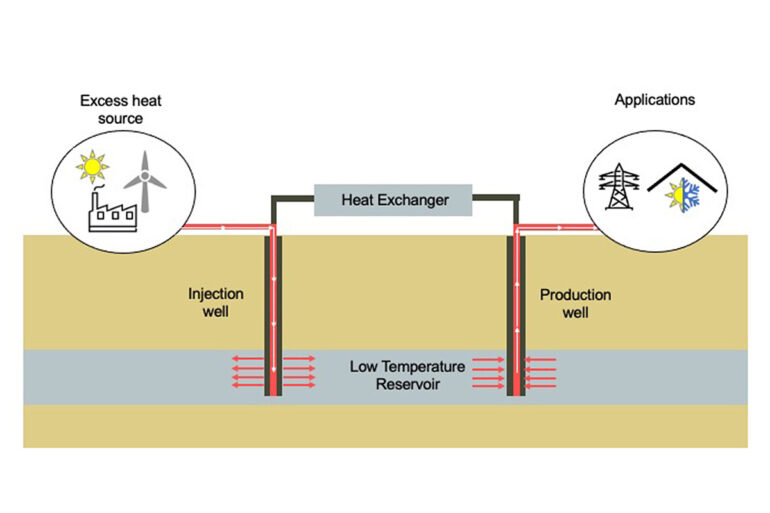Researchers at the University of I llinois Urbana-Champaign have successfully demonstrated efficient geothermal heat storage while simultaneously repurposing an abandoned oil and gas well.
A new study, led by civil and environmental engineering professor Tugce Baser, is the first field investigation of a geothermal energy storage system within the Illinois Basin—a geologic structure located deep within the subsurface.
The findings are published in the journal Renewable Energy.
Baser said the Illinois Basin is a low-temperature basin, meaning that it does not naturally produce geothermal energy to generate electricity. However, the formations in deeper subsurface have the thermal and hydraulic properties needed to establish an artificial geothermal reservoir.
“Many of the same properties that make a subsurface rock formation ideal for oil and gas extraction also make it ideal for geothermal storage,” Baser said. “And because our test site is a former gas well, it already has most of the needed infrastructure in place.”
Baser said the basin contains spongelike rock units with open pore space and minerals with optimum thermal conductivity sandwiched between insulating layers—providing the space and insulation needed to establish an artificial heat reservoir capable of retaining fluids hot enough to generate electricity.
Using data from previous field observations and preliminary numerical modeling studies, the team chose to inject preheated fluid into the Cypress Sandstone, a porous rock unit located approximately 900 meters under the surface at the test site.
To test the heat storage capacity of the site, the researchers injected water heated to 50 degrees Celsius into the well for three days of injection in April 2021. After shutting down the well, the team monitored changes in pressure, thermal conditions and hydraulics for five days.
“Our field results, combined with further numerical modeling, find that the process can sustain a thermal storage efficiency of 82%,” Baser said.
The study further reports an average overall net cost of electricity generation of $0.138 per kilowatt-hour, making the proposed system economically viable and profitable.
“Our findings show that the Illinois Basin can be an effective means to store excess heat energy from industrial sources and eventually more sustainable sources like wind and solar,” Baser said. “The underground reservoir essentially acts as a large underground battery while repurposing abandoned oil and gas wells. It is a win-win situation.”
Researchers from the Illinois State Geological Survey and the Projeo Corporation also contributed to this research.
More information:
Josiane Jello et al, Advanced geothermal energy storage systems by repurposing existing oil and gas wells: A full-scale experimental and numerical investigation, Renewable Energy (2022). DOI: 10.1016/j.renene.2022.07.145
Provided by
University of Illinois at Urbana-Champaign
Citation:
Geothermal ‘battery’ repurposes abandoned oil and gas well in Illinois, researchers report (2023, January 26)



